The cheese category can still provide high margins and plenty of opportunities if retailers offer the right formats, prices and inspiration.
Whether it’s Red Leicester, Stilton or your everyday Cheddar, the cheese category is a mainstay in convenience stores that can be relied on to churn out sales throughout the year. But despite the UK being a proud nation of cheese lovers, the cheese market is forecast to see a decline in value.
According to Mintel data, heavy retail discounting coupled with inflation and supply chain pressures are to blame, forcing independent retailers to rethink their own pricing strategies and stock.
It is a challenge to manage consumer expectations, admits Akbal Cheema, owner of a Costcutter store in Bloxwich, Walsall. He says: “I think it is pivotal to get the price right; it is important to stay competitive and offer the best prices you can. Customers are driven by big brands and cheap prices throughout food and grocery, and with cheese this is the same. When we offer big brands at cheap prices that is when we see big sales. The only downside is that customers expect these prices all the time and not just when they’re on promotion.”
But it’s not all bad news. Cheese is still a must stock for retailers, with high sales margins. In total pre-packed cheese is worth more than £338m in convenience, according to Dairy Crest.
Amy Fisher, senior marketing manager at Dairy Crest, adds: “Cheese is a household staple bought by 99% of UK households. It is an integral part of the top-up shopping mission, which remains the primary mission in convenience and, as such, is a clear must-stock category for c-stores.”
According to HIM Research & Consulting, one in 50 shoppers will buy cheese when visiting a convenience store and approximately a third of all cheese consumers’ total cheese spend per year is from a convenience store.
Snacking cheese is the fastest-growing area in the cheese market, according to Mintel, with 23% of cheese consumers now eating cheese as a snack or treat substitute.
“Mini Babybel is a brilliant example of a snack suitable for enjoying on the go. It’s conveniently pre-portioned, pocket-sized and can be taken anywhere, that’s why it is the leading snack cheese,” says Chloé Féminier, head of insight and planning at leading manufacturer, Bel UK.
She says the consumer demand for innovative cheese snacks has driven Bel UK to launch the Laughing Cow Mini Cravings. “These little cubes can be a pre-dinner or mid-morning snack and they come in three variants,” she says.
Snacking cheese
The snacking trend is rising as the industry moves with the continuing surge in demand for food on the go.
Féminier adds: “Our other latest innovation is also driven by snacking trends. The Laughing Cow Dip and Crunch is a versatile snack that allows consumers to enjoy this snack at their own convenience, in three different varieties.”
Adam Vincent, store manager at Dike & Sons in Dorset, says: “We stock a variety of cheese snacks in our chilled section that perform well. Products such as Dairylea and Babybel cheeses are mostly popular with younger children, but they also are enjoyed by adults and bought as packed lunch items.”
Mondelez International trade communications manager Susan Nash further endorses snacking cheese as a way for store owners to boost sales.
She says: “Retailers need to stay ahead of the trends and use latest insight to help shape their ranges in order to maximise sales. The snacking cheese category incorporates processed cheese: spreads and slices, on-the-go cheese snacks plus soft white cheese such as Philadelphia. Within snacking cheese, soft white cheese and processed cheese are growing. Importantly, snacking cheese shows headroom for growth with 86% penetration, while soft white and processed cheese shows even greater potential.
“In addition, impulse purchasing is on the increase (90% of consumers said they purchased on impulse in 2014, compared with 83% in 2011). This is important to the category, as we believe there is an opportunity to inspire purchase in-store by having a comprehensive and exciting range of core cheese, covering each important sub-category.”
Cathedral City targets cheese snackers
Dairy Crest has introduced a Cathedral City Snack Bar into the convenience channel this month, tapping into the on-the-go trend.
The Snack Bar (rrp 60p), which bears the Cathedral City masterbrand livery, is a convenient 30g cheese snacking product targeting on-the-go shoppers looking for an alternative to traditional sweet and savoury snacks.
Cathedral City Snack Bar is available in mature and mature lighter variants with lighter containing less than 100 kcals each. The line is packaged in cases of 12 individually bar-coded bars.
Will Hemmings, head of cheese marketing at Dairy Crest, says: “Consumers are increasingly shunning traditional snacking products in favour of lower sugar, more natural alternatives. Our research suggests that significant numbers of adults are already snacking on cheese in the home, but feel that there are no products suited to their needs for on-the-go snacking. Cathedral City Snack Bar offers the opportunity to drive relevance and consideration of cheese as a savoury snacking alternative at these on-the-go snacking occasions when merchandised alongside other grab-and-go items.”
Along with stocking core cheese, it can pay off for retailers who introduce something out of the norm so that they stand out from the crowd. John Perrett, owner of 14 Spar stores on the Isle of Wight, made the decision to stock cheese products from a local supplier.
John says: “We stock a wide range of cheeses, from the big brands such as Cathedral City to our very popular Spar own-brand lines and our Isle of Wight range from a local supplier. I think it is important to have a good display with a wide range and variety of products at different price points, to make the category stand out and give customers plenty of options.
“We like to try to stock a few things in the store that are a bit different and which give us a different identity. We have two variants of cheese on the island: the Isle of Wight soft cheese and blue cheese. These are popular, but on a smaller scale, and both tourists and locals enjoy them. Stocking unique lines can give your business a competitive edge.”
Trends in Cheddar
When it comes to block cheese, Cheddar is by far the most popular, according to Kantar Worldpanel data, including mild, mature, extra-mature, vintage and spreadable.
Rich Clothier, managing director at Wyke Farms, says: “Some 84.4% of Cheddar bought in independents and symbols is in block format, 9.2% grated and 6.3% sliced. Interestingly for a ‘convenient’ format, grated under-trades in independents and symbols compared with the total market. Wyke Farms-branded Cheddar is packaged in convenient laser-perforated zip packs, so the product can be used without the need for scissors and can be kept fresh in the fridge without secondary packaging being required, helping reduce waste.”
Adam says the top seller in Dike & Sons is 350g of mature Cheddar. He says: “We have a wide selection of cheese, from Nisa’s Heritage range of pricemarked packs (PMPs) to big brands such as Cathedral City and Wyke Farms.
“Our most popular product is by far the £2 350g mature Cheddar block from Wyke Farms that comes in a resealable packet to maintain freshness. This is very much our customers’ go-to cheese product. Price is the main driver for the category, with the bigger blocks selling very well when they are on special offer and Heritage cheeses doing the same due to their quality and PMPs that appeal.”
Although Cheddar may be most popular in block format, it makes sense to stock a range of formats. According to Dairy Crest, sliced, grated and snacking, as well as sectors used for meal preparation such as ‘recipe’ and ‘speciality’, are experiencing good growth, driven by consumer trends for convenience and easy meal preparation.
Dairy Crest’s Fisher says: “By offering a credible range of products for easy meal preparation including convenient cheese formats such as sliced, grated and spreadable and cheese snacking products for between meals consumption, retailers can tap into the needs of today’s time-starved consumers looking for quick and easy meal solutions.”
Akbal points out that another convenience-led format which has taken off is the resealable pack. “I have noticed some people opt for products that make their life a bit easier, such as resealable bags, ready-grated cheese and cheese slices that can be applied to bread straight away. These innovations are good sellers and the resealable packets of cheese are the most popular.”
Sid Ali, who owns four Nisa stores in Aberdeenshire, says that it can pay to stock cheese in all shapes and sizes. He says: “Grated cheese is on the up. I think this is because it is a pain to grate yourself and people are paying for the convenience. The second biggest performer is resealable blocks of Cheddar, followed by cheese spreads and children’s cheese snacks.
“Cheese slices aren’t good sellers at our store, but we stock them in our biggest store because we know our competitors do and we don’t want to give even one customer a reason to go anywhere else. So it pays to stock cheese in all its forms.”
Pricing and merchandising
Where leading independent retailers are unanimous is that price is one of the category’s key drivers.
John Perrett says: “People are becoming more aware of how much they’re spending and if they can get good value for their money and buy a quality product at a round price, it really appeals to them. This is why the Spar cheese range has proven so popular, with PMPs on a range of variants and pack sizes. The products are very good quality, too.”
Adam agrees: “When big brands of cheese are stocked in the promotional bays they really take off, and during that two-week specific promotional period, 60-70% of all of our cheese sales are from the bays, so it really proves that price is key.”
PMPs are a vital sales tool for c-stores with 57% of c-store shoppers saying that they buy PMPs, according to Dairy Crest.
Fisher believes this will only continue. “In the wake of Brexit, there is a feeling of economic uncertainty, and consumers are more focused on seeking out quality products at competitive price points. This is especially true for household staples that are bought regularly, such as cheese. This trend of savvy consumerism has called for more transparent pricing and it is therefore becoming even more important for convenience retailers to offer a selection of products in both pricemarked and non-price-marked packs to cater to the needs of all consumers,” she explains.
Merchandising is also important says Rich Clothier, and he believes that getting the range right can unlock incremental sales for retailers.
“Within the chiller, branded block Cheddar should be given the most prominent position and the bulk of the space,” he says.
“Territorial lines and soft cheese should be part of the range, but lower in priority. Promotional strategy should be focused on everyday good value price points, or a linked product saving. Cross-category merchandising could include link savings on cider or bread to tie into the Big Night In and at-home dinner party occasions.”
He suggests using shelf barkers or striping to educate shoppers and communicate recipe ideas, Cheddar strength and usage occasions including wine pairings or highlight local or regional products.
Fisher recommends retailers focus on stocking smaller pack sizes such as 200g and 350g cheese products, to meet consumer demand for top-up products and to help them manage their cash outlay. “Cathedral City 350g mature block leads total block cheese sales in symbol group retailers, while in independent c-stores Cathedral City mature 200g block is a star performer.”
While it has been a steady year for the cheese category, the next 12 months could be a bit more challenging, but as long as retailers merchandise right and stay ahead of trends, they can still savour a slice of the sales.
Adam says: “Sales of cheese this year have been good. I expect that with the recent economic and supply chain concerns, that there could be a bit of a knock-on effect on cheese prices across the country, but time will tell. In the meantime, we will make sure we keep looking at areas to enhance our offering.”






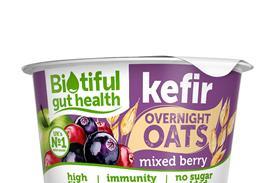


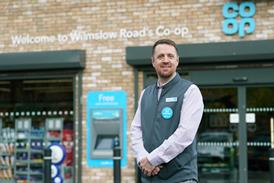







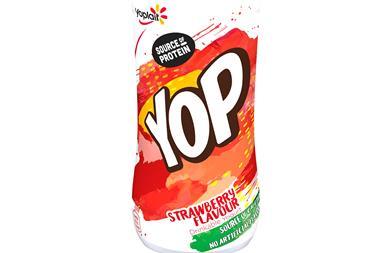
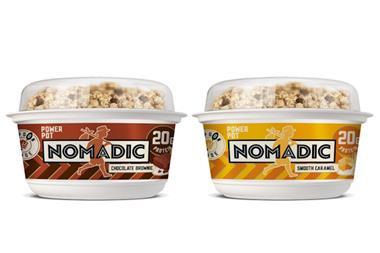
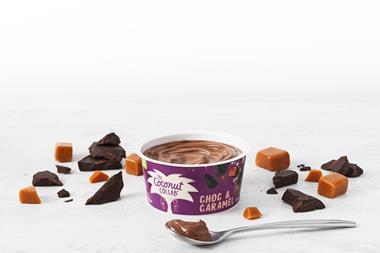
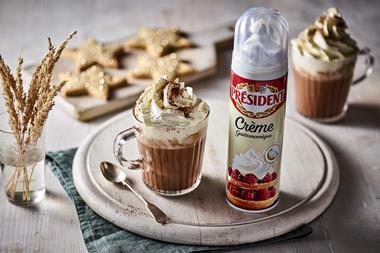
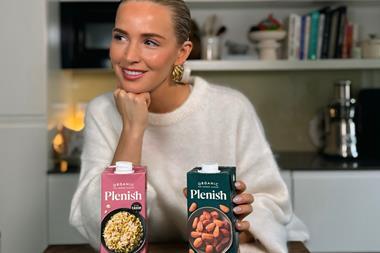






No comments yet